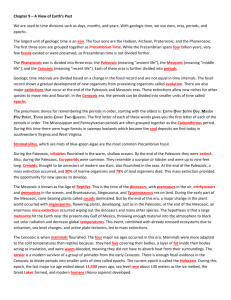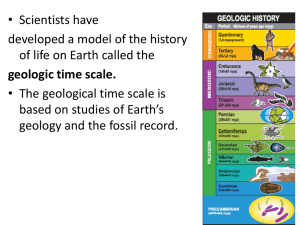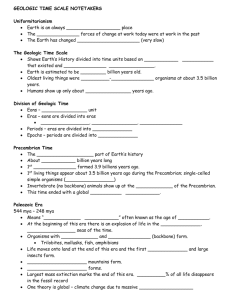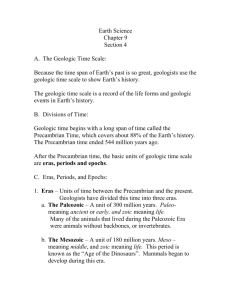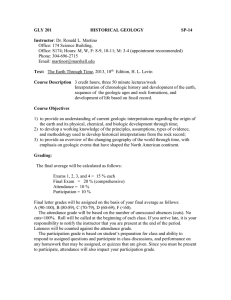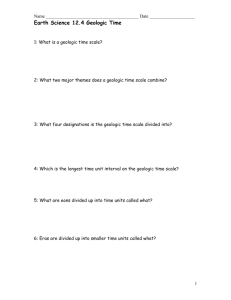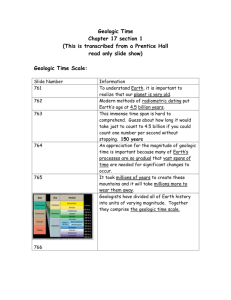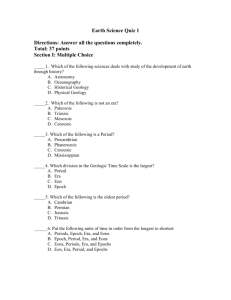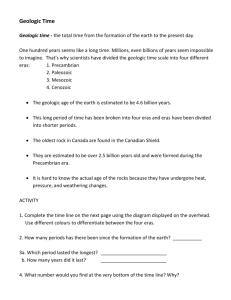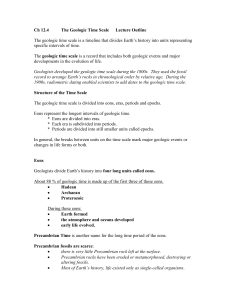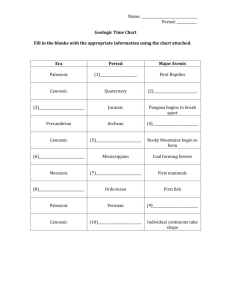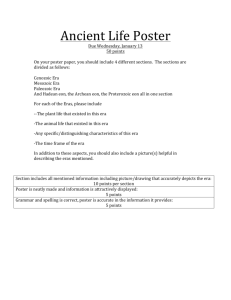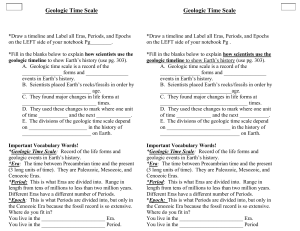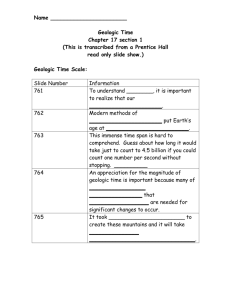21.1-Notes-Geologic-Time
advertisement
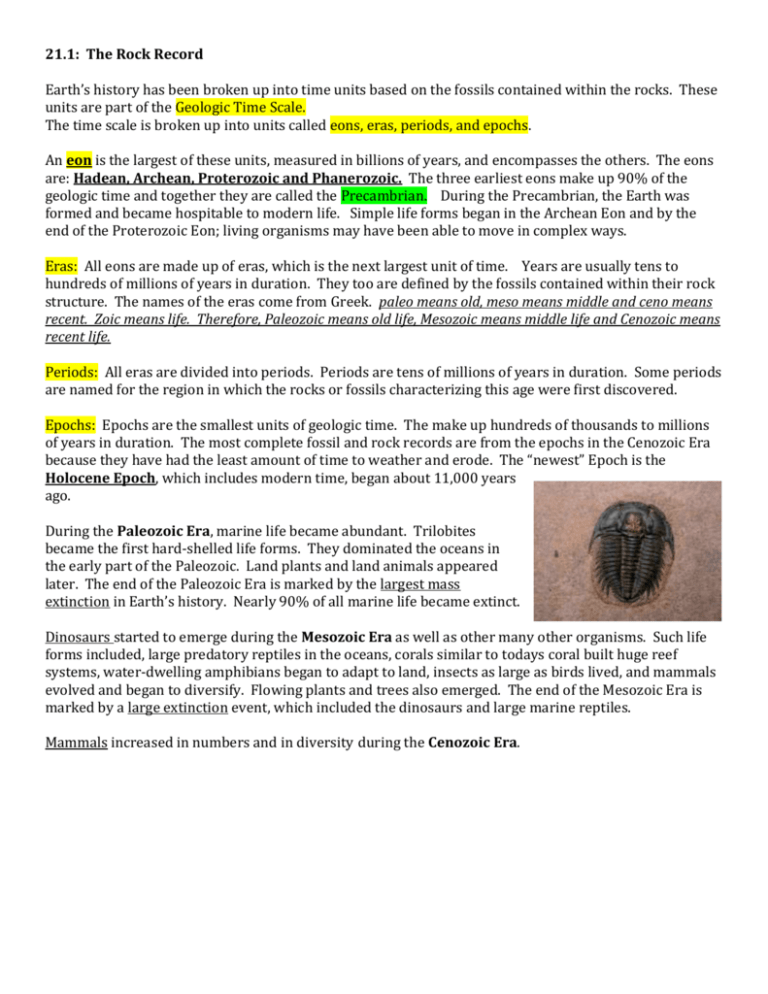
21.1: The Rock Record Earth’s history has been broken up into time units based on the fossils contained within the rocks. These units are part of the Geologic Time Scale. The time scale is broken up into units called eons, eras, periods, and epochs. An eon is the largest of these units, measured in billions of years, and encompasses the others. The eons are: Hadean, Archean, Proterozoic and Phanerozoic. The three earliest eons make up 90% of the geologic time and together they are called the Precambrian. During the Precambrian, the Earth was formed and became hospitable to modern life. Simple life forms began in the Archean Eon and by the end of the Proterozoic Eon; living organisms may have been able to move in complex ways. Eras: All eons are made up of eras, which is the next largest unit of time. Years are usually tens to hundreds of millions of years in duration. They too are defined by the fossils contained within their rock structure. The names of the eras come from Greek. paleo means old, meso means middle and ceno means recent. Zoic means life. Therefore, Paleozoic means old life, Mesozoic means middle life and Cenozoic means recent life. Periods: All eras are divided into periods. Periods are tens of millions of years in duration. Some periods are named for the region in which the rocks or fossils characterizing this age were first discovered. Epochs: Epochs are the smallest units of geologic time. The make up hundreds of thousands to millions of years in duration. The most complete fossil and rock records are from the epochs in the Cenozoic Era because they have had the least amount of time to weather and erode. The “newest” Epoch is the Holocene Epoch, which includes modern time, began about 11,000 years ago. During the Paleozoic Era, marine life became abundant. Trilobites became the first hard-shelled life forms. They dominated the oceans in the early part of the Paleozoic. Land plants and land animals appeared later. The end of the Paleozoic Era is marked by the largest mass extinction in Earth’s history. Nearly 90% of all marine life became extinct. Dinosaurs started to emerge during the Mesozoic Era as well as other many other organisms. Such life forms included, large predatory reptiles in the oceans, corals similar to todays coral built huge reef systems, water-dwelling amphibians began to adapt to land, insects as large as birds lived, and mammals evolved and began to diversify. Flowing plants and trees also emerged. The end of the Mesozoic Era is marked by a large extinction event, which included the dinosaurs and large marine reptiles. Mammals increased in numbers and in diversity during the Cenozoic Era.

